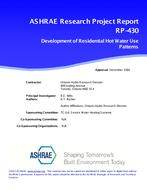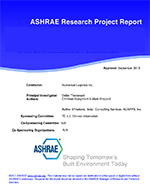The drying of hay via a low-temperature liquid-desiccant drying system was simulated experimentally for three different climatic conditions. The liquid-desiccant system used in the study consisted of a climate simulation subsystem, and desiccant regeneration subsystem. The closed-loop drying subsystem uses a liquid desiccant to dehumidify the drying air before exposure to the hay. The drying process is considered low temperature because the dehumidification process raises the air temperature only a few degrees above ambient. The desiccant regeneration temperature, the desiccant concentration, and the desiccant flow rate were held constant during the experiments. However, regeneration of the weak desiccant was accomplished under several simulated climatic conditions. System performance with a new cost-effective liquid-desiccant mixture (CELD), composed of equal portions by weight of lithium chloride and calcium chloride, was determined. The results of this work demonstrate that the drying of hay and other agricultural products with low-temperature liquid-desiccant systems can be cost-effective and potentially preserve the product’s quality. A conventional heated-air drying process was also simulated. Results of the conventional drying are compared with results of the low-temperature liquid-desiccant drying process.
KEYWORDS: year 1995, experiment, driers, crops, agriculture, desiccants, lithium chloride, low temperature, costs, economics, comparing, moisture
Citation: ASHRAE Trans. 1995, Vol.101, Part 2, Paper number 3900, 229-239, 13 figs., refs.
Product Details
- Published:
- 1995
- File Size:
- 1 file , 1.6 MB
- Product Code(s):
- D-16903


